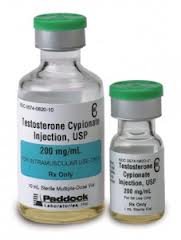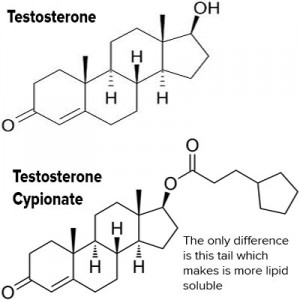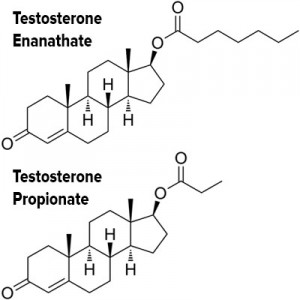Testosterone Replacement Therapy

In fact, Low T centers who specialize in low testosterone and testosterone replacement therapy are springing up all over the country. If you search the internet for “Tulsa Testosterone,” “Low T Tulsa,” or some other variant of testosterone replacement therapy you will undoubtedly find a number of ‘hits.’
What is the big deal with testosterone?
Why the sudden interest?
Testosterone is a steroid hormone present in both men and women. It has very important effects for each gender but it is responsible for many of the male characteristics such as hair distribution, muscle mass, sex function and drive, and many others.
What happens if Testosterone is low?
Well, for starters, you often feel bad!
There are a number of symptoms associated with low testosterone in women and in men. I’ve written a post specifically on the problems with low testosterone in men. The following applies to men and women but these are the symptoms that most women would notice:
- Muscle wasting
- Weight gain
- Fatigue
- Low self-esteem
- Decreased HDL
- Dry, thin skin with poor elasticity
- Thinning and dry hair
- Droopy eyelids
- Sagging cheeks
- Thin lips
- Anxiety
- Low libido (sex drive)
So, You have low testosterone, now what?
There are a few things to consider here. The first thing is to ask ‘why are my testosterone levels low?‘ It may be impossible to answer this question but it has to be addressed. As you probably already know, our main focus at Revolution Health & Wellness Clinic is to identify and treat the underlying medical condition cause the problem! We’ll focus on this component in a later post.
After considering the underlying issue then we can consider what else needs to be done. There are 2 options: a natural approach to try to raise testosterone levels without actually giving testosterone and testosterone replacement therapy (TRT).
The Natural Approach to Low Testosterone:
Supplementing with exogenous testosterone should not be taken lightly for a number of reasons and it is very reasonable to start with a natural approach. Here is how I would approach that:
- Decrease caloric intake – lower calorie intake has been shown to increase testosterone levels
- Increase protein intake –
- Arginine, Leucine, and Glutamine – amino acids
- Exercise – you’ll want to focus on the high intensity, interval type training
- Get enough sleep
- Reduce stress –
- Lose weight – if obese or overweight
- Zinc (if deficient) – zinc is needed for the metabolism of testosterone
- TestoPlex (Testosterone Revolution) – one of our supplements which has been shown to increase free testosterone
Testosterone Replacement Therapy (TRT)
You may have tried the natural approach or you’re levels may have been so low that you want to take a form of testosterone in order to increase your levels and help get you back on the right path as quickly as possible. But, like I said earlier, this is not something that should be entered lightly.
Taking exogenous testosterone replacement (testosterone from outside your body) will very likely decrease your body’s ability to produce it on its own. Your body will shut down its own testosterone producing factories because they aren’t being told to produce testosterone since you are giving it to yourself some other way.
If you shut down all of your factories then you’ll have trouble producing it again without a little help. This is definitely something we can plan for but we may not get the desired results in the long run. You may ‘rebound’ to a level lower than ideal for you and this may mean that you need to be on Testosterone Replacement Therapy (TRT) in some form long-term. This isn’t necessarily a problem but definitely something that should be considered.
Disclaimer: testosterone replacement therapy (TRT) should be reserved for patients in need of testosterone supplementation from a medical perspective. We do not prescribe, nor do we recommend any one take, testosterone replacement for performance or anabolic purposes only. While testosterone replacement therapy, under the guidance of an appropriately trained and experienced physician, is extremely safe there are potential risks that must be managed. This information is intended solely for the education of the reader in the setting of medically indicated testosterone replacement therapy.
Different Forms of Testosterone:
There are several methods for taking Testosterone Replacement Therapy (TRT). There are 4 primary methods:
- Sublingual (Troches, Liquid)
- Topical (transdermal) testosterone replacement – gels or creams
- Injections
- Pellets
Each method has its pros and cons.
Troches – these are waxy little pills that you place under your tongue and allow them to dissolve. The medicine goes directly into your bloodstream but it takes a while for the troche to dissolve. I typically recommend them twice daily in order to get good effects due to the relatively short half-life of bioidentical testosterone in them. The troches are compounded, or made, at a compounding pharmacy so they are made specifically for you.
Sublingual – the testosterone can also be put into a liquid which you would put under your tongue. This works basically the same way as the troches but it is a liquid so it doesn’t have to dissolve.
The oral/sublingual route (troches and sublingual testosterone replacement therapy) is not my preferred simply because I don’t know how much each patient is swallowing and how much is absorbing straight into their bloodstream. The body processes it differently. I believe there are better routes of administration.
Topical (transdermal) – Topical testosterone replacement therapy is available commercially or compounded. Your physician can prescribe topical testosterone using brand names like Axiron, Androgel, Testim, etc. These medications are available at most pharmacies with a prescription. However, they are very expensive and are fairly low concentration. If insurance doesn’t cover your testosterone replacement medication then you may be out several hundred dollars for a single month’s supply.
Compounded topical testosterone is an excellent option. With a prescription, the compounding pharmacy can make a testosterone gel or cream up to 15% concentration. Commercially available testosterone is typically around 1-2% concentration. Thus, we can give much higher doses in a much smaller volume.
I have not seen optimal results with the commercially available preparations due to the large volume required. I have seen some patients that had to use enough to cover both arms and across their chest, allow it to dry, and then apply it again in order to get a sufficient amount. That is a lot of testosterone gel!
We can get the same doses of testosterone is a much smaller volume and at a fraction of the cost in a compounded version. However, you do want to be careful and choose a reputable compounding pharmacy that you can trust!
Another important thing to consider with topical testosterone is that there can be transferrance. Transferrance occurs when the testosterone on your skin rubs off on someone else when there is skin to skin contact. This can happen several hours after you apply the gel or cream so you need to consider that as well.
Pellets – Another option for testosterone replacement therapy is subcutaneous pellets. Basically, these are small pellets containing testosterone which are implanted under the skin and slowly released over 3-6 months. My biggest concern with pellets is ensuring the correct dosing because once they are in you cannot remove them. If you place too many of them you will simply have to wait until they are absorbed. Most of the time this isn’t an issue with high quality pellets but it is something to consider.
I have heard of good, consistent results for 3 months after pellet placement but it becomes variable after that. Many have good results for 6 months but between 3 and 6 months it is unpredictable and variable. The other concern I have is with the cost. They are several hundred dollars and not covered by insurance. This makes it one of the most expensive options for testosterone replacement therapy. However, if you want to place them and forget about them then this may be a great option for you!
Injections – Testosterone Replacement Therapy (TRT) can also be given by injection. The other forms of testosterone replacement are bioidentical meaning that the testosterone in the medicine is the exact same structure as the testosterone that your body creates. The 1/2 life of testosterone is relatively short so you generally have to take those medicines 1-2 times per day in order to maintain appropriate levels.
Injections are a little bit different. The testosterone molecule is slightly altered by the addition of a ‘tail’ on the molecule which slows its absorption and effect in the body.

There are 2 other testosterone medications that we typically use: Testosterone Enanthate and Testosterone Propionate. Each of these testosterones have slightly different properties.
Testosterone Enanthate has a shorter half-life than testosterone cypionate but slightly longer than testosterone propionate. I generally dose this injection about every 4-5 days. Some patients prefer how they feel with this medication.
Testosterone Propionate has a shorter half-life than testosterone enanthate and I often prescribe it every 3-4 days.

How often should you take your injections?
The majority of our patients do very well on testosterone cypionate injections and we generally recommend them once a week. If you are on testosterone replacement therapy (TRT) injections but only taking them every 2, 3, or even 4 weeks then either you or your doctor don’t understand the pharmacokinetics. Testosterone cypionate does not last that long in your system!
How you feel 10-14 days after your injection. If you start to notice a decline in your energy, performance, or any other testosterone related issue then ask yourself why you are only taking the injection every 2-4 weeks. Why would we only treat you half to a quarter of the time. Makes no sense! We want to dose and time your injections to get you the most appropriate therapy.
There are numerous other considerations when replacing testosterone. It is not as simply as just taking an appropriate amount of testosterone!
Taking supplemental testosterone can adversely affect a few things. It can alter your blood lipids (cholesterol), increase your hematocrit and make your blood thicker, increase DHT, and increase estradiol as discussed below. All of these issues need to be followed if you are on testosterone replacement therapy. However, I do not typically see these problems with normal physiologic levels (our target dose). I generally see these issues when the testosterone levels are too high.
Testosterone Replacement Therapy (TRT) is an art and you want an experienced artist. As I stated before, you want to consider the original problem causing low testosterone and that is first and foremost. Next, you have to consider the metabolism of testosterone as it converts to estrogen (estradiol) as well as Dihydrotestosterone (DHT). You want appropriate levels of those hormones as well.
Appropriate testosterone management addresses all of these issues to help you feel and perform your best within the confines of appropriate medical therapy.






